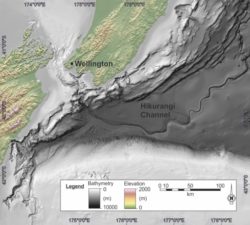Morphodynamics of sinuous seafloor channels: using LBM to couple fluid dynamics to landscape evolution
- Academic lead
- Amir Khan (Civil Engineering)
- Industrial lead
- Adam McArthur (Turbidites Research Group)
- Co-supervisor(s)
- Alan Burns (Chemical and Process Engineering), Jeff Peakall (Earth and Environment), Bill McCaffrey (Earth and Environment), Rob Dorrell (University of Hull)
- Project themes
- Environmental Flows, Geophysical and Astrophysical Flows
Fluid-solid multiphase flows in environmental systems repeatedly develop similar landform patterns – understanding why is a fundamental challenge. Modelling of such flows is complicated by the range of scales between those controlling turbulent suspension of particulate material and the size of the systems themselves (e.g., the modern Hikurangi Channel, offshore New Zealand). In this PhD, the student will directly address these issues of scale and model complexity by further developing a University of Leeds Lattice Boltzmann Model, implemented on massively parallel Graphics Processing Units, to describe multiphase flow and erodible beds at environmental scale. Integrated modelling across this scale range will offer insight into system evolution and self-organisation. The study will benefit by experimental study of flows through sinuous channels in the Sorby Environmental Fluid Dynamics Laboratory. The PhD will be supported by the industry-supported Leeds Turbidites Research Group, and the student will interact directly with industry sponsors; however, no copyright conditions will be enforced on research developed within the project.

The Hikurangi Channel offshore New Zealand runs for c. 2000 km, demonstrating significant changes in channel dimensions, sinuosity and resulting flow properties. Data courtesy of NIWA.
